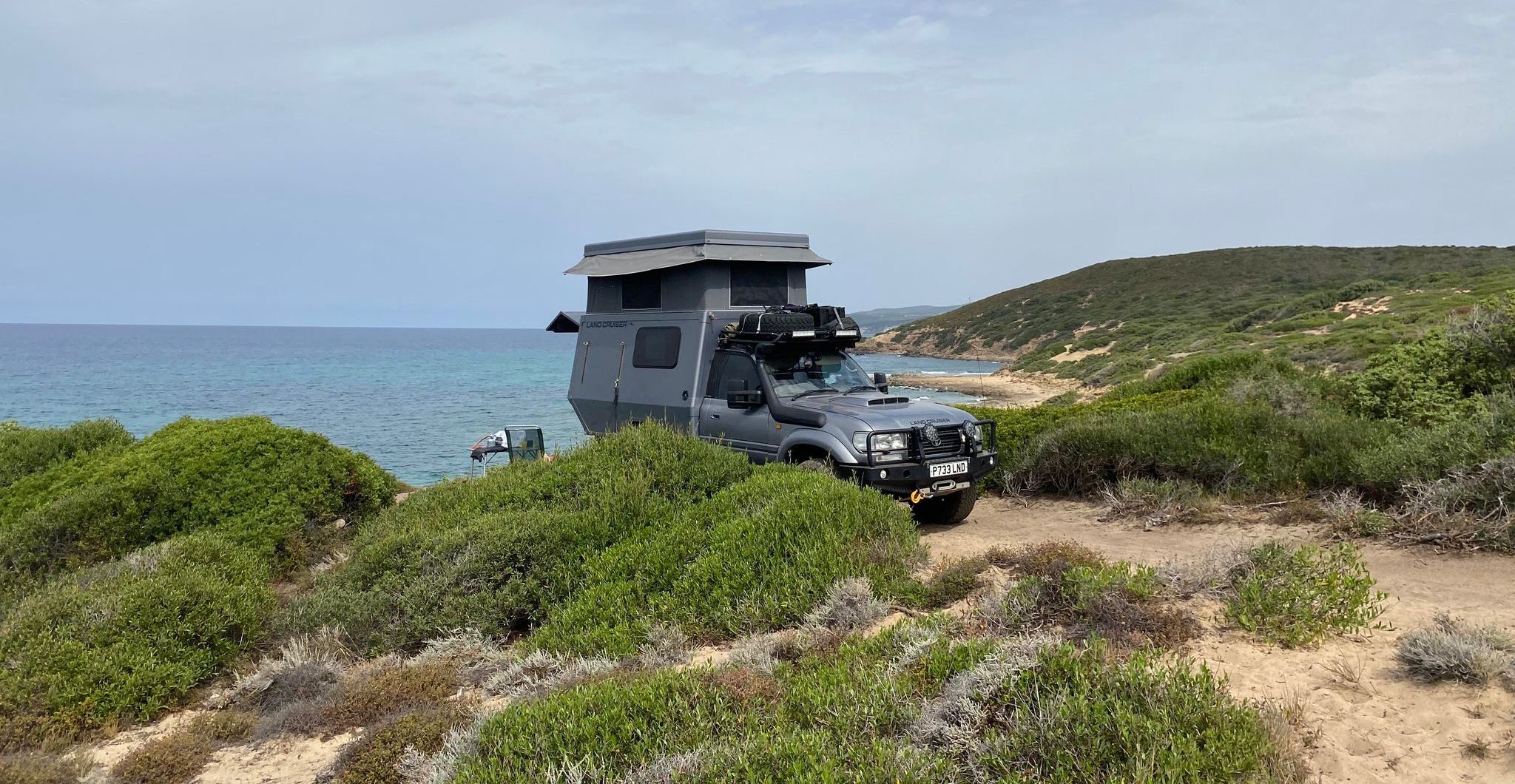For some, converting a perfectly capable and desirable stock-standard overland truck such as an 80 Series Land Cruiser or a classic Land Rover Defender into a live-in camper is sacrilege.
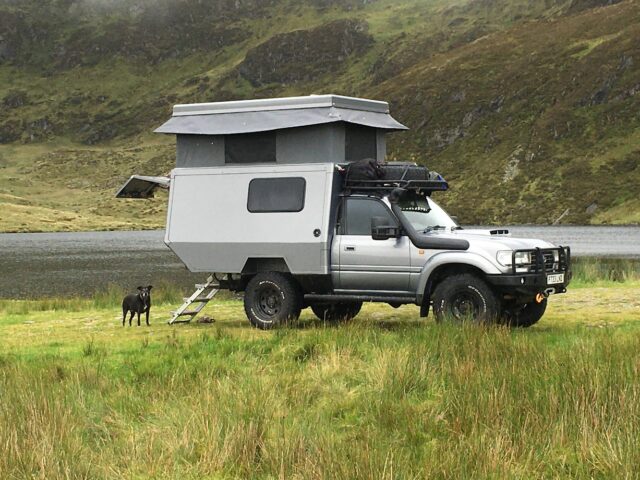
While chopping up a vehicle can be heartbreaking, each cut must be done with the confidence that the conversion will thoughtfully improve every aspect of life on the road, and all those naysayers will be proven wrong. Almost every long-term overland traveler knows that a compact, live-in 4WD is the Holy Grail, the most capable nirvana on four wheels. The ultimate overland vehicle is one built with the goal of optimized mobility (the ability to explore almost anywhere) with the advantage of security and just enough comfort that the hard days are softened and the good days are made sweeter. Modern comfort is overrated; luxury is relative, and overall performance is everything in the world of the long-distance overland traveler. Michael and Catherine Clark are experienced travelers who know what they want from a travel vehicle.
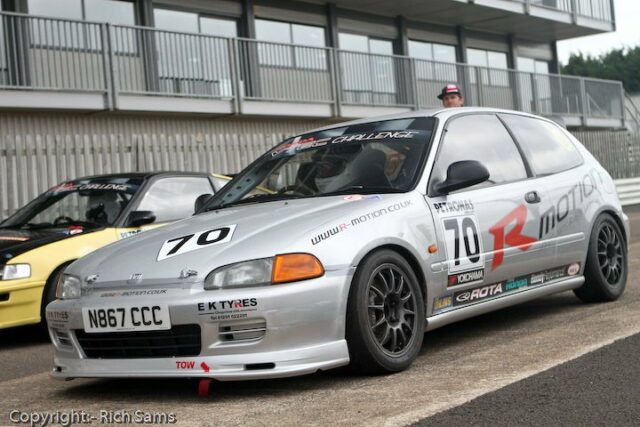

Michael Clark’s evolution from a university geography professor to a builder and racer of Honda performance cars and finally to an overland travel enthusiast is a chronicle rich with passion, knowledge, and an unwavering quest for adventure. This story began with a childhood fascination with cars of all shapes and sizes, extending beyond mere modifications. Today, it’s about creating a mobile sanctuary that captures the essence of discovery and the ability to navigate the globe’s most secluded landscapes. Who better to explore the world by vehicle than a man with an advanced understanding of mechanics and geography?
Michael’s initial foray into the world of mobile living began in his 20s with a self-converted ex-AA (Automobile Association) van. This early experience planted the seeds of a lifelong passion for vehicles that not only transport but also provide shelter and comfort. It was around 2014 when Michael’s interest pivoted from racing to offroading, marking a significant shift in his journey. Offroading opened up new possibilities—a stark contrast to the conventional camper-van life, allowing him to venture further into territories inaccessible to the 2WD hordes.

This newfound interest led to acquiring a 1996 Toyota 80 series Land Cruiser, a truck that would become the foundation of his future adventures. Michael’s deep appreciation and understanding of Japanese automotive engineering significantly influenced his choice of the base vehicle. The 1990s were a golden era for Japanese cars, with models like the Honda Integra, Nissan Skyline GT-R, and Toyota Supra defining automotive excellence. Among these, the Toyota Landcruiser stood out for its robustness and reliability, notably the 80 Series, known for its superior equipment levels in the UK-spec models, including the coveted three factory differential locks.
In 2019, Michael shipped the rooftop tent and drawer system-equipped Land Cruiser to South Africa for a journey through Namibia and Botswana. This trip was a blend of rugged adventure and introspection, and it was during this journey that Michael realized the need for an overlander who could navigate the challenges of remote travel without compromising on convenience and practical comfort.
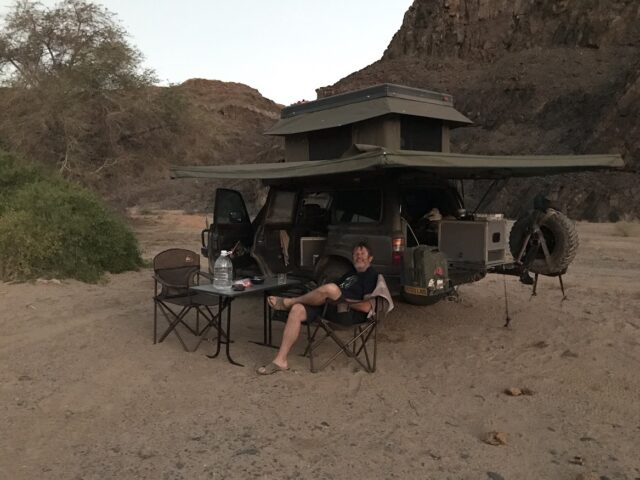
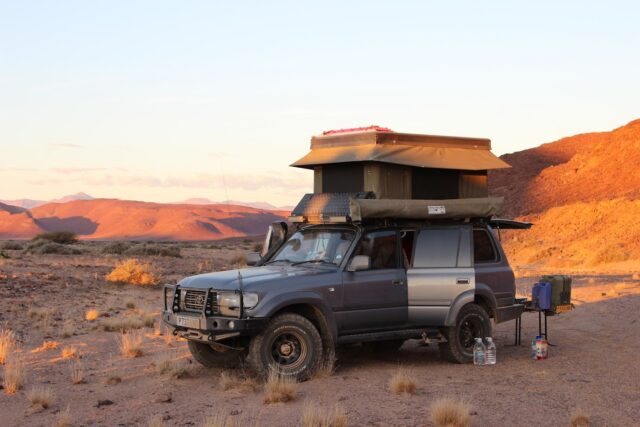
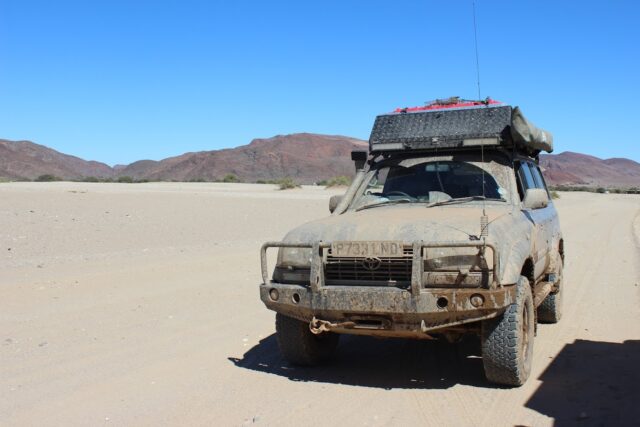
Key insights from this trip included:
- A vehicle’s compactness is essential for easy shipping and navigation through tight spaces
- The necessity for ample water and diesel storage
- The desire for limited internal luxuries that make the wild feel a bit more like home.
At home, you do not have to unpack half the house to find a band-aid, colander, or tool, and opening a drawer and finding what you need is an understated luxury for a long-distance traveler.
The more Michael thought about it, the transformation of the Land Cruiser into a live-in overland travel rig was inevitable. The result of his hard work and investment is a testament to Michael’s technical skill and attention to detail.

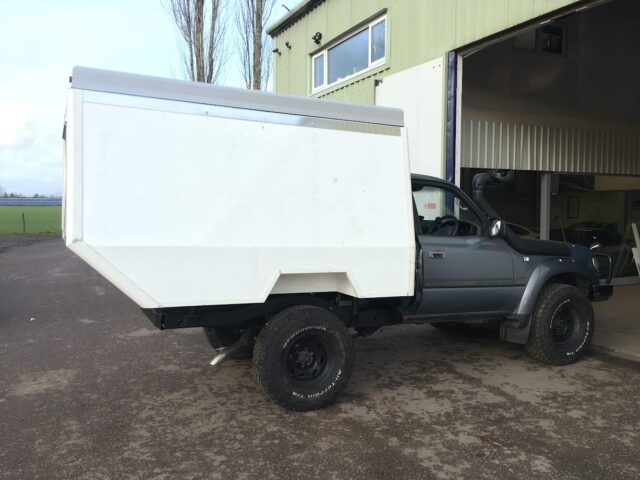
The process began with a comprehensive mechanical overhaul. This phase also included modifications such as installing a winch bumper, rock sliders, and an intercooler. The mechanical aspects of the vehicle were kept relatively stock, with strategic modifications to suit challenging environments. This included the addition of modular wheels with BFGoodrich T/A K02 tires and an Old Man Emu suspension and lift. The extended-range fuel tank was an important addition—essential for long-distance travel without frequent refueling.
The camper conversion was an even more ambitious undertaking. With a budget of around $32,000, Michael began cutting, fabricating, and customizing the Cruiser to suit his vision of the ultimate travel companion. Unlike a classic Defender that can be dismantled in a day, the Land Cruiser station wagon body had to be cut from roof to frame, adjacent to and in line with the B pillar, which would form the base of the bulkhead between the cabin and the camper. As there would be a pass-through and the camper would be directly attached to the cabin, the engineering was demanding, and there was no room for error. Not only did the seam have to be airtight and waterproof, but it also had to be fortified enough to absorb the strain and flex of off-road travel. If you get this facet of the build wrong, the entire project will be a write-off.
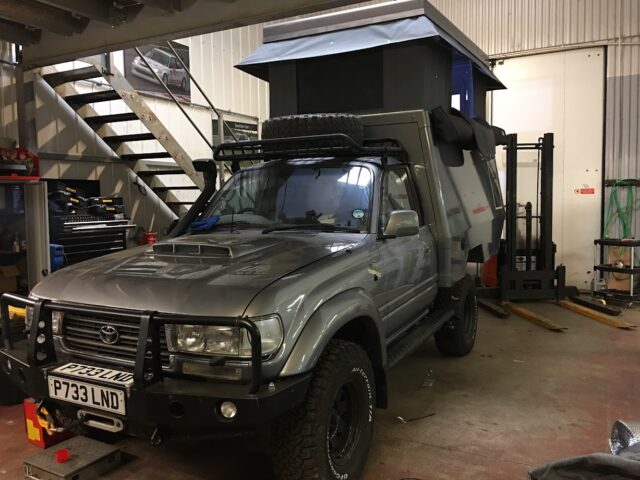
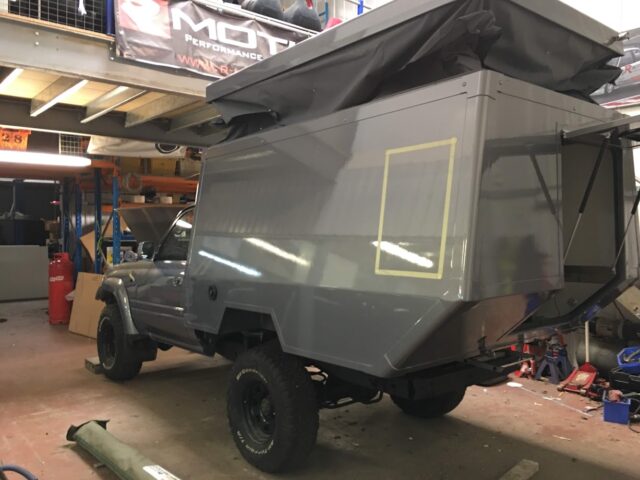
This build process included constructing the box, customizing the interior, and integrating a unique roof system. Michael’s decision to perform most of the labor himself was a cost-saving measure and a personal journey into the heart of his project. By building the vehicle himself, Michael knew its strengths and weaknesses, and he had the knowledge required to maintain and repair it wherever in the world he may be. Inspiration for the vehicle’s design came from diverse sources, but the “Sackwear Edition” Land Cruiser 80 Series built by Maltec was a significant influence. Michael collaborated with Frank, a German craftsman, who constructed the rear cabin to Michael’s specifications. This collaboration was pivotal in finishing the design, especially integrating a custom-built pop-top tent by Bundutec in South Africa, which became an innovative solution for maximizing living space. The pop-top is Michael’s favorite element of the build, as the tent features a double bed and 360-degree views.








The camper’s interior is simple, practical, and built to last. In addition to the dinette, which converts into a bed, there is a kitchen with a sink, cooker, and drawers, a basic bathroom, and enough storage without too much storage. A small roof rack houses the spare wheel and bulky gear. Painted in gray to match the original Toyota color, the camper has proven to be a worthwhile investment.
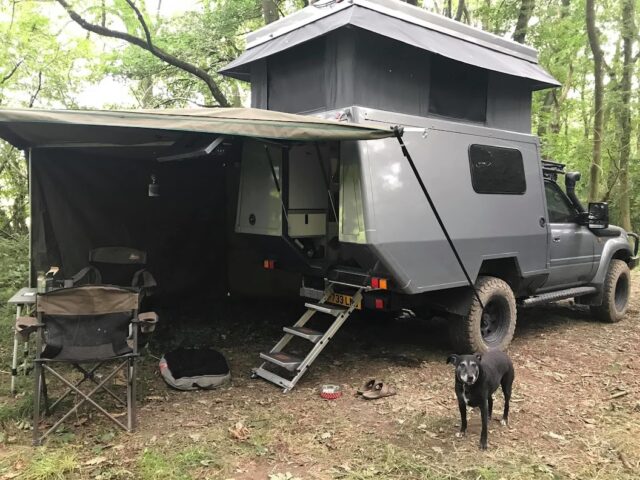
Despite meticulous planning, Michael’s travel plans were significantly impacted by the COVID-19 pandemic. Intended trips to Australia and Morocco were either canceled or modified. However, the Land Cruiser proved its mettle across various European landscapes, showcasing its versatility and reliability in diverse conditions. These travels throughout Europe were not just about covering distances but discovering the continent’s hidden gems, accessible only to a vehicle designed to conquer the unbeaten path.
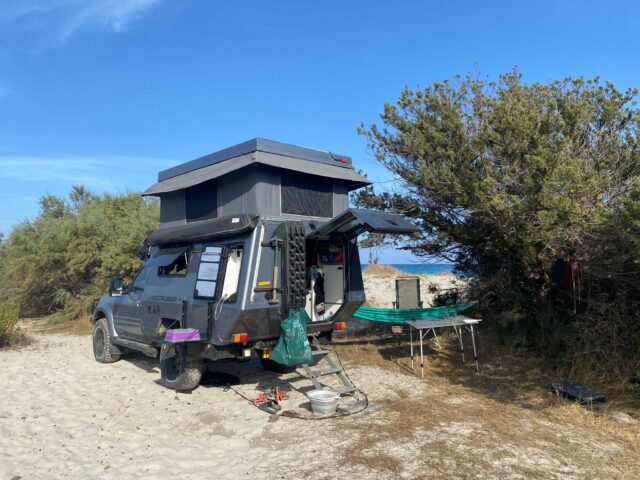
Looking to the future, Michael’s aspirations remain high, with South America as a key destination on his radar. The vehicle is more than up to the task, and we look forward to following Michael and Catherine’s journeys in the future.
Specifications
1996 Toyota Land Cruiser 80 Series
Power
- 4.2-liter 1HD-FT 6-cylinder 24-valve turbodiesel
- Cross Country top mount intercooler and boost raised 10%
- Custom 3-inch stainless steel exhaust
- Safari Snorkel (and differential breathers)
Suspension and drive
Old Man Emu shocks and springs and steering damper
Wheels and Tires
- Steel modular 16-inch wheels
- 275/75/16 BFGoodrich All-Terrain T/A KO2 tires
Recovery and armor
- Fabryka 4×4 winch bumper, rock sliders, and underguard
- Come Up Seal Pro winch
Accessories
- 300 watts of solar power
- 240 amp-hour leisure batteries
- Webasto Thermo Top C coolant heater
- 25-liter Calorifier
- 140-liter fresh-water tank
- 240-volt inverter
- Fiamma water pump
- Nature Pure water filter
- Thetford Portable toilet with retrofitted SOG system
- 30-liter waste tank
- Stainless shower tray
- Indel 85-liter compressor fridge
- Internal and external gas hobs
- External drop-down table
- Ostrich Wing 270-degree awning
- Custom roof rack
- Extendable wing mirrors
- Spot and fog lights
- CB radio and various gauges
Facebook: Michael Clark
Read More: Hard-Shell Rooftop Tents : Buyers Guide
Our No Compromise Clause: We do not accept advertorial content or allow advertising to influence our coverage, and our contributors are guaranteed editorial independence. Overland International may earn a small commission from affiliate links included in this article. We appreciate your support.


